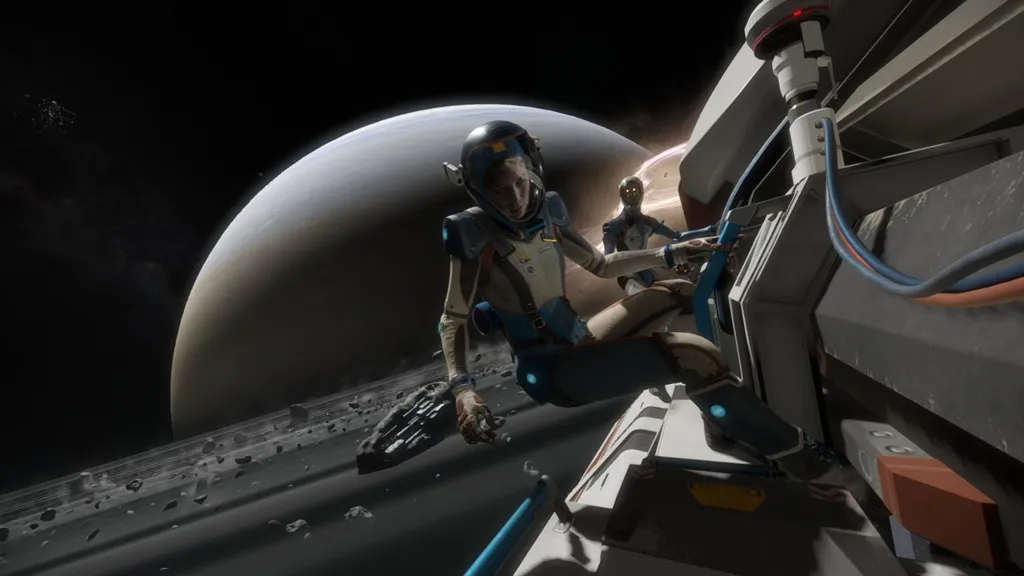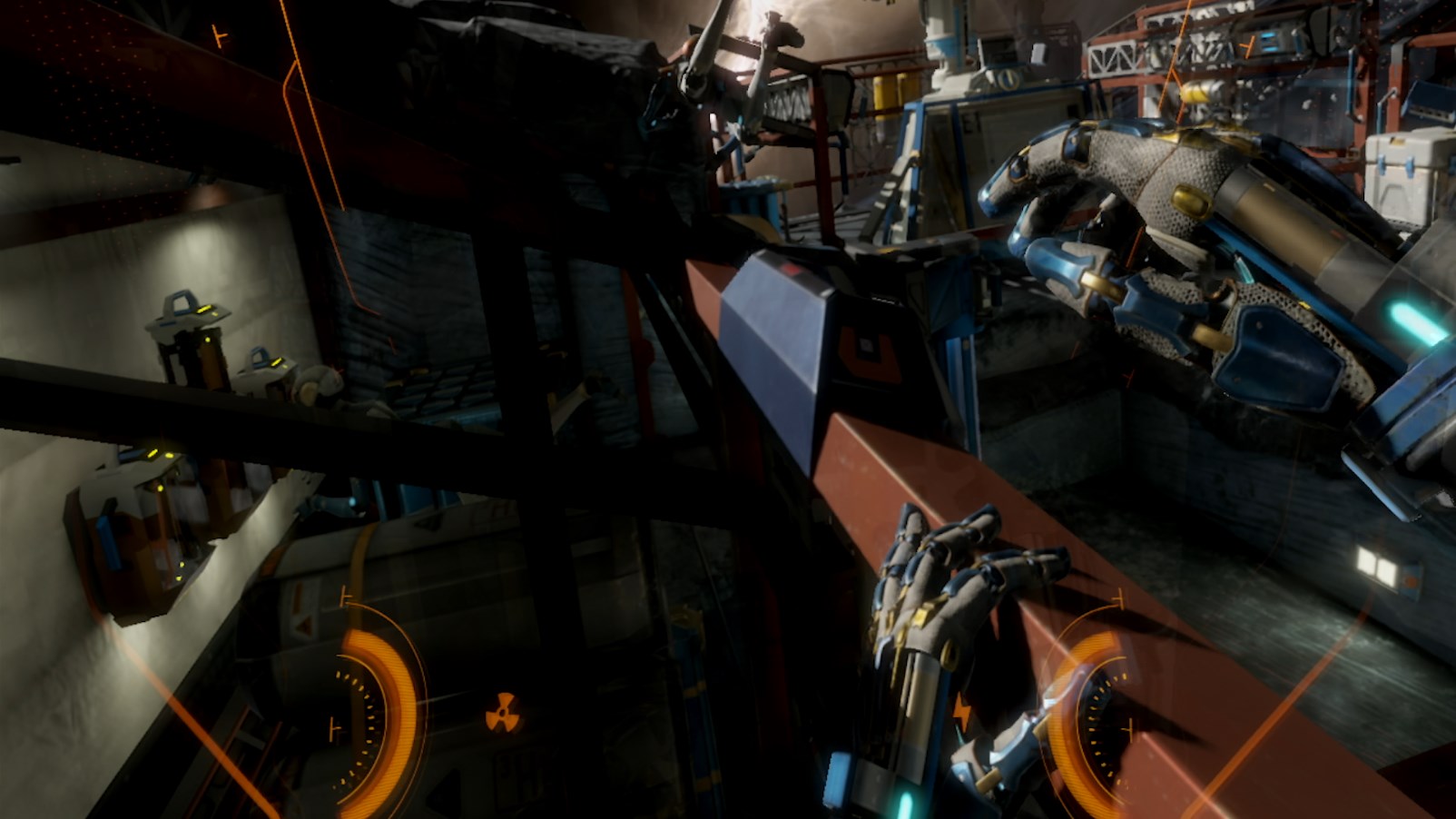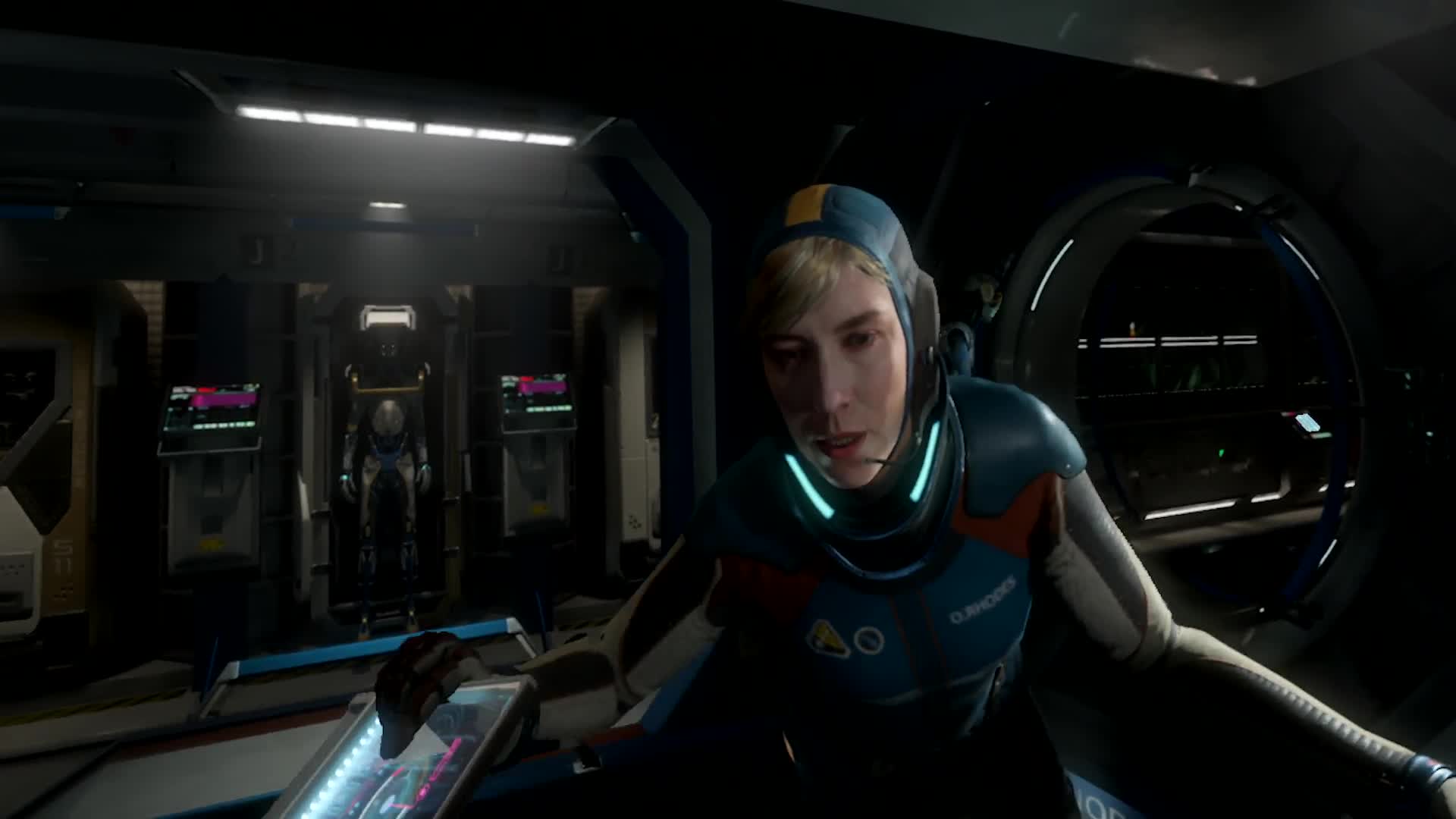Isaac Asimov, Arthur C. Clarke and H.G. Wells could only dream of the words they envisioned when they began penning sci-fi classics. Some of those would come to life inside our TV screens and movie theaters in the decades that followed, but the futures they painted are still far outside of our lifetimes. Most of us will never get to have a space odyssey of our own.
That is, unless, you play Lone Echo.
Ready at Dawn Studios’ VR debut isn’t a direct adaptation of any of those author’s works, but you can feel their influence coursing through its tense, moody 4 hour run time. This sci-fi epic is far more interested exploring familiar themes of survival and human/A.I. connection than it is raising your heartbeat. The zero-gravity gameplay, meanwhile, is centered around immersion, atmosphere and interaction instead of explosive escapes and gigantic set pieces. This isn’t the action-packed blockbuster recent trailers suggested, so if you were hoping for VR’s very own Gravity you’re best looking elsewhere.
What you’re getting instead is something far more interesting. Lone Echo is set in the year 2126 aboard the Kronos II Mining Platform, a space station sitting on the rings of Saturn. You play as Jack, a cybernetic A.I. that embodies robotic shells, assisting Captain Olivia Rhodes in the day-to-day functions of the facility. Picking up towards the end of Rhodes’ tenure, the two share a close relationship that you can somewhat personalize with dialogue choices and contextual interactions.
It’s the bond between these two central characters that pulls you through Lone Echo’s story. Jack’s cybernetic shell often leaves you questioning just how deep his connection with Rhodes really goes, while her own mortality is the reason you find yourself pushing on as an inconvenient repair job quickly escalates into a much larger battle for survival. But, while the stakes are high, the game rarely veers into anarchy and action.
Much of Lone Echo’s gameplay is comprised of busy work. In videogame terms that means a lot of fetch quests. More often than not you’ll be floating around a room, searching for batteries to power a generator, switches to open doors, or cutting surfaces with a laser to uncover panels and pathways. Its pacing feels deliberate, only rarely dipping into sluggish, and shows you why immersion in itself can be more than enough to pull you through a VR narrative.
If you’ve played the beta for Lone Echo’s multiplayer spin-off, Echo Arena (also released today for free), you’ll know just how startling a revelation the game’s movement system is. Jack can grab onto any surface and then throw himself towards his next destination using entirely intuitive and natural movements. As you progress, you’ll also get thrusters to steer you through much bigger environments, but it’s those core mechanics that are the most engaging.
They become second nature almost instantaneously, and I often reminded myself of the movements I’ve seen real astronauts make as I hung onto the side of a computer to talk to Rhodes, or instantly stopped my zero-g drifting by quickly latching onto a handle. It’s worth pointing out, too, that this was all with two Rift sensors; quick turn options make Lone Echo entirely comfortable and accessible in VR and I didn’t feel shortchanged without true 360 gameplay. That said the three sensor setup is obviously still preferable.
You get the sense that much of Ready At Dawn’s time has been spent fine-tuning all of this as close to perfection as it can get. You’re not able to clip your head through walls and objects like in most VR games, for example, and Jack’s fingers will seamlessly slide across a circular handle as you rotate your arm while a projection of the actual position of you arm will appear if its virtual counterpart isn’t able to follow. Simply put I really felt like I was in the body of the protagonist, more so than I have with most other VR experiences. Ultimately that’s what it’s all about, isn’t it?
Similarly engaging is Lone Echo’s take on user interface, which expands upon the wrist-mounted menus that have come before it. Using Touch’s gesture recognition, you can reach out to you wrists, arms, and even the side of your head to activate different features. You might control an A.I., but your body is the living, breathing controller you’d expect it to be. Going beyond that, your physical presence has meaning inside your space; you can interact with Rhodes by giving her the peace sign or a thumbs up, and she’ll shake you off if you start grabbing her arm.
This high sense of presence fuels the game’s fascinating sense of discovery. The joy of Lone Echo is really just being inside of it. Watching the universe go by as you ride transports from station-to-station and venturing into the unknown to explore the many halls of a mysterious construct perfectly captures the revelatory heart of those classic sci-fi tales. The only difference is this time you’re living it.
Pacing isn’t always on point, though. The repetition of tasks and a wealth of reused assets in the game’s second half is very noticeable as sections start to drag and you begin to anticipate the next menial objective. In those moments it was the thought of reaching my ultimate objective that got me to push on rather than taking a break.
It’s offset somewhat by a clever twist on the gameplay that rears its head at the two-hour mark. Here Ready at Dawn brilliantly turns its locomotion mechanic on its head. Suddenly there are large portions of rooms that you can’t touch, and that liberating, carefree movement needs to be honed in and refined. Your throws have to have pinpoint accuracy and you’ll have to negotiate complex paths to safety. This was some of the most inventive, unique and engaging VR gameplay I’ve seen, I just wish there was more of it and that the idea had been given space to grow further.
That is to say Lone Echo doesn’t defy what’s quickly becoming an unwelcome trope for VR; the lackluster ending. What you get here is a cliffhanger with little in the way of a climax outside of a touching moment five minutes beforehand. An interesting turn in the story convinced me I had just reached the halfway point, and then the credits appeared. There was still so much of this world I wanted to explore, and so much space for its mechanics to grow, but it all ends just before it has a chance to really ascend beyond the current upper echelons of VR experiences.
Lone Echo is a landmark achievement in three key areas of the VR experience: locomotion, UI, and interaction. The winning blend of intuitive movement, discovery-based gameplay and character-driven storytelling create a compelling sense of presence that few VR games could hope to match, while the considered pacing gives it a fresh identity. I hate to mark it down on such a trivial aspect as length, but the package simply feels incomplete, rounding off in the second act and depriving you of both the narrative and mechanical evolutions I was expecting to encounter in the third. If there’s a silver lining, it’s that I expect its sequel to be one of VR’s very best.
Lone Echo is available now on Oculus Rift for $39.99. Check out these official review guidelines to find out more about our process.

























